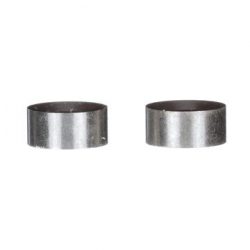What Is Deburring In Steel Fabrication?
April 14, 2023 9:11 pm Leave your thoughts What Is Deburring In Steel Fabrication?
What Is Deburring In Steel Fabrication?
When working with metals, it’s important to keep the finished product smooth and free from burrs. These rough ridges can cause blistering, cracking, and other flaws that will affect the appearance of the metal and its ability to hold up under conditions of use. In order to prevent these issues from occurring, it’s important to deburr a metal product before it leaves the shop. The process doesn’t have to be complex or time-consuming.
Deburring
Deburring is a necessary step for steel fabrication. The process helps to remove imperfections on the surface after welding or machining, leaving behind a smooth, quality metal part. Manual deburring involves a team member using sandpaper and specialist tools to identify and remove burrs. This method is a traditional way of achieving a good finish but can be slow and costly. Mechanical deburring is faster and more cost-efficient, especially if many parts need to be processed at once. It can be done by grinding or rolling, which uses a rotating wheel that impacts the metal parts with abrasive materials like liquids or sand. Tumbling is another deburring method that involves placing metal parts in a centrifugal or vibrating barrel with abrasive media. These abrasive materials start moving and rubbing against the metal parts, removing the burrs from the surfaces without scratching them.
Grinding And Rolling
In steel fabrication, the main deburring processes are grinding and rolling. Both of these processes eliminate burrs without scratching the surface and leave a good finish to the metal parts. During the rolling process, there is a tendency for the work piece to spread out (spread). This spreading can be a major concern in cases where the width to thickness ratio of the work piece is low. However, there are ways to compensate for this problem. One is to ground the rolls thicker towards the center. This extra thickness is called camber. Another option is to use vertical rolls or edge rolls that have a constant gap between them throughout the rolling process. This allows the deformation to be offset by the roll deflection. There are also a variety of different abrasive materials that can be used in this process. Choosing the right one is important because it can make a big difference in how much the part deforms and how well the abrasives work.
Chamfering
In steel fabrication, chamfering is used to ease sharp edges and corners. It also increases load-bearing capacity of a machined part. Both fillets and chamfers are used for the outside edges of a part, but you can choose one over the other depending on your design requirements. Fillets reduce stress on the part and distribute the applied stresses over a larger surface area, while chamfers ease sharp edges and prevent rapid deformation. If your part is intended for a fastener to be driven into the hole, a fillet is not a good choice since it will obstruct the smooth movement of pins and screws. Instead, a chamfer is the better option as it relieves stress on the part while promoting smoother fastener insertion. A chamfer is also more forgiving than a fillet when assembling mating parts. Its holes allow for smooth movement and insertion, making it easy to insert male parts into female parts. It can be cut at a variety of angles with a single tool, unlike fillets that require multiple tools.
Categorised in: Deburr, Steel Fabrication
This post was written by admin

 What Is Deburring In Steel Fabrication?
What Is Deburring In Steel Fabrication?